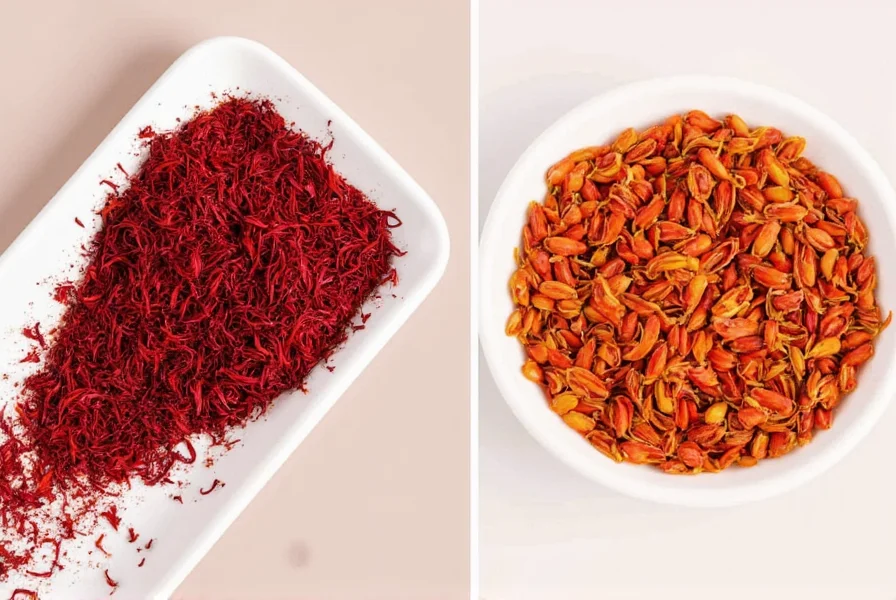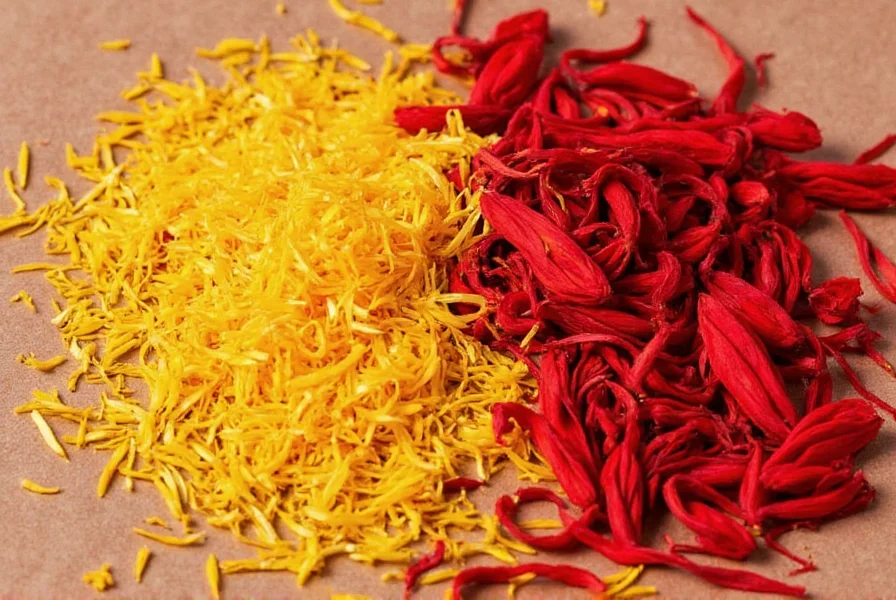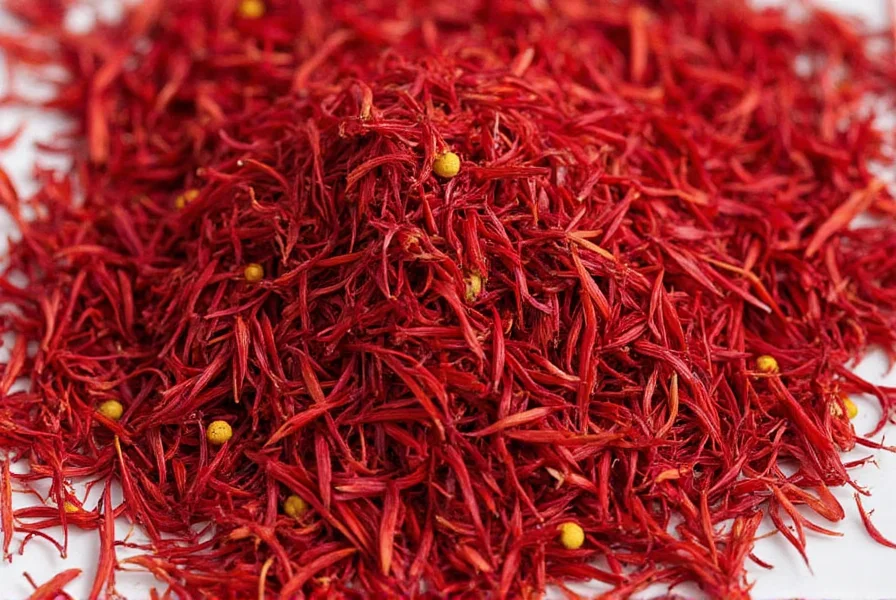When searching for saffran, you're likely looking for information about saffron—the precious spice often misspelled as "saffran." This comprehensive guide clarifies the confusion and provides essential knowledge about authentic saffron, its uses, identification methods, and value.
Understanding Saffron: Beyond the Spelling Confusion
The term "saffran" typically represents a spelling variation of saffron, which derives from the Arabic word "za'faran." Saffron has been cultivated for over 3,000 years, with historical records showing its use in ancient Persian, Egyptian, and Greek civilizations. The spice comes exclusively from the Crocus sativus flower, commonly called the saffron crocus.
Each saffron crocus produces only three stigmas, which must be hand-picked at dawn when the flowers are still closed. This labor-intensive harvesting process—requiring about 40 hours of work to collect just one ounce of dried saffron—explains why it commands such high prices, typically ranging from $500 to $5,000 per pound depending on quality.
Why Saffron's Price Reflects Its Value
The extraordinary cost of saffron stems from several factors that distinguish it from other spices:
| Factor | Impact on Price | Comparison to Other Spices |
|---|---|---|
| Harvesting labor | 150,000+ flowers needed for 1kg | Mechanically harvested spices require 90% less labor |
| Seasonal availability | 3-4 week annual harvest window | Most spices harvested year-round |
| Perishability | Loses potency within 6 months | Many spices retain quality for 2+ years |
| Geographic limitations | Grows only in specific climate zones | Most spices adaptable to multiple regions |
Identifying Authentic Saffron
Due to saffron's high value, adulteration is common in the marketplace. Understanding how to identify genuine saffron prevents costly mistakes when purchasing this precious spice.
Real saffron threads should appear deep red with orange tips, never uniformly red or dark purple. When placed in warm water, authentic saffron gradually releases a golden-yellow color over 15-20 minutes, not an immediate red tint. The threads should maintain their structure rather than dissolving completely.
Be wary of products labeled as "saffran" that appear suspiciously affordable. Genuine saffron costs approximately $5-$10 per gram. If you find "saffran" priced below $2 per gram, it's likely adulterated with safflower, marigold petals, or synthetic dyes.

Culinary Applications of Saffron
Saffron's unique flavor profile—earthy with subtle honey notes—enhances dishes without overwhelming other ingredients. Professional chefs recommend these techniques for maximizing saffron's potential:
- Bloom method: Steep threads in warm liquid (water, broth, or milk) for 20-30 minutes before adding to recipes
- Grinding technique: Crush threads with a pinch of sugar using a mortar and pestle before dissolving
- Temperature control: Never add saffron directly to boiling liquids, which destroys delicate flavor compounds
- Measurement precision: A single gram (about 40 threads) flavors 4-6 servings of rice or soup
Traditional dishes featuring saffron include Spanish paella, Italian risotto alla Milanese, Persian tahdig, and Swedish saffron buns. The spice pairs exceptionally well with seafood, rice, poultry, and creamy sauces.
Evidence-Based Health Considerations
While saffron has been used in traditional medicine systems for centuries, modern research provides insight into its potential benefits. Studies published in the Journal of Integrative Medicine indicate saffron contains crocin and safranal compounds with antioxidant properties.
Research suggests saffron may support mood regulation when consumed in appropriate amounts (typically 30mg daily). However, these findings shouldn't be interpreted as medical advice. Always consult healthcare professionals before using saffron for health purposes, especially if pregnant or taking medications.

Proper Storage and Usage Guidelines
To preserve saffron's potency and flavor, follow these storage recommendations:
- Store in an airtight container away from light and moisture
- Maintain temperatures below 70°F (21°C)
- Use within 6 months for optimal flavor (though safe for up to 2 years)
- Never store saffron in the refrigerator due to humidity risks
When cooking with saffron, remember that less is more. Excessive amounts create bitterness rather than enhancing flavor. For best results, always bloom saffron threads before incorporating them into dishes.
Common Substitutes When Saffron Is Unavailable
While no substitute perfectly replicates saffron's unique flavor, these alternatives can work in specific applications:
- Turmeric: Provides similar golden color but lacks saffron's distinctive flavor (use 1/4 teaspoon turmeric per saffron pinch)
- Annatto: Offers color without significant flavor impact (soak 1/4 teaspoon seeds in warm liquid)
- Safflower: Mimics appearance but has minimal flavor contribution (often sold as "Mexican saffron")
- Paprika: Provides color and mild flavor in tomato-based dishes (use sparingly to avoid overpowering)
Understanding the difference between genuine saffron and these alternatives prevents disappointment in your culinary creations. Remember that products marketed as "saffran" may actually be these substitutes rather than true saffron.
Conclusion: Appreciating Saffron's Unique Value
The term "saffran" typically refers to saffron, one of history's most treasured spices. By understanding its origins, proper identification methods, and culinary applications, you can make informed decisions when encountering this valuable ingredient. Whether you're searching for saffran spelling clarification or want to incorporate authentic saffron into your cooking, this knowledge ensures you appreciate and utilize this remarkable spice correctly.
Is saffran the same as saffron?
Yes, saffran is simply a common misspelling of saffron. Both terms refer to the spice derived from Crocus sativus flowers. The correct spelling is 'saffron,' but 'saffran' appears frequently due to linguistic variations and typing errors.
Why is saffron so expensive compared to other spices?
Saffron's high cost stems from its labor-intensive harvesting process. Each flower produces only three stigmas that must be hand-picked at dawn. Approximately 75,000 flowers are needed to produce one pound of saffron, requiring about 40 hours of labor per ounce. The short annual harvest window and specific growing requirements further contribute to its premium price.
How can I tell if saffron is genuine or adulterated?
Authentic saffron threads appear deep red with orange tips, never uniformly colored. When placed in warm water, genuine saffron gradually releases a golden-yellow hue over 15-20 minutes (not immediate red coloring). Real saffron maintains thread structure in liquid rather than dissolving completely. Be suspicious of products labeled 'saffran' priced below $2 per gram, as genuine saffron typically costs $5-$10 per gram.
What's the proper way to use saffron in cooking?
For optimal flavor extraction, 'bloom' saffron by steeping threads in warm liquid (water, broth, or milk) for 20-30 minutes before adding to recipes. Alternatively, crush threads with a pinch of sugar using a mortar and pestle, then dissolve in warm liquid. Never add saffron directly to boiling liquids, which destroys delicate flavor compounds. A single gram (about 40 threads) typically flavors 4-6 servings of rice or soup.
Are there reliable substitutes for saffron in recipes?
While no substitute perfectly replicates saffron's unique flavor, turmeric provides similar golden color (use 1/4 teaspoon per saffron pinch). Annatto offers color without significant flavor impact, and safflower (sometimes sold as 'Mexican saffron') mimics appearance but has minimal flavor. These alternatives work in specific applications but cannot duplicate saffron's distinctive earthy-honey flavor profile.











 浙公网安备
33010002000092号
浙公网安备
33010002000092号 浙B2-20120091-4
浙B2-20120091-4